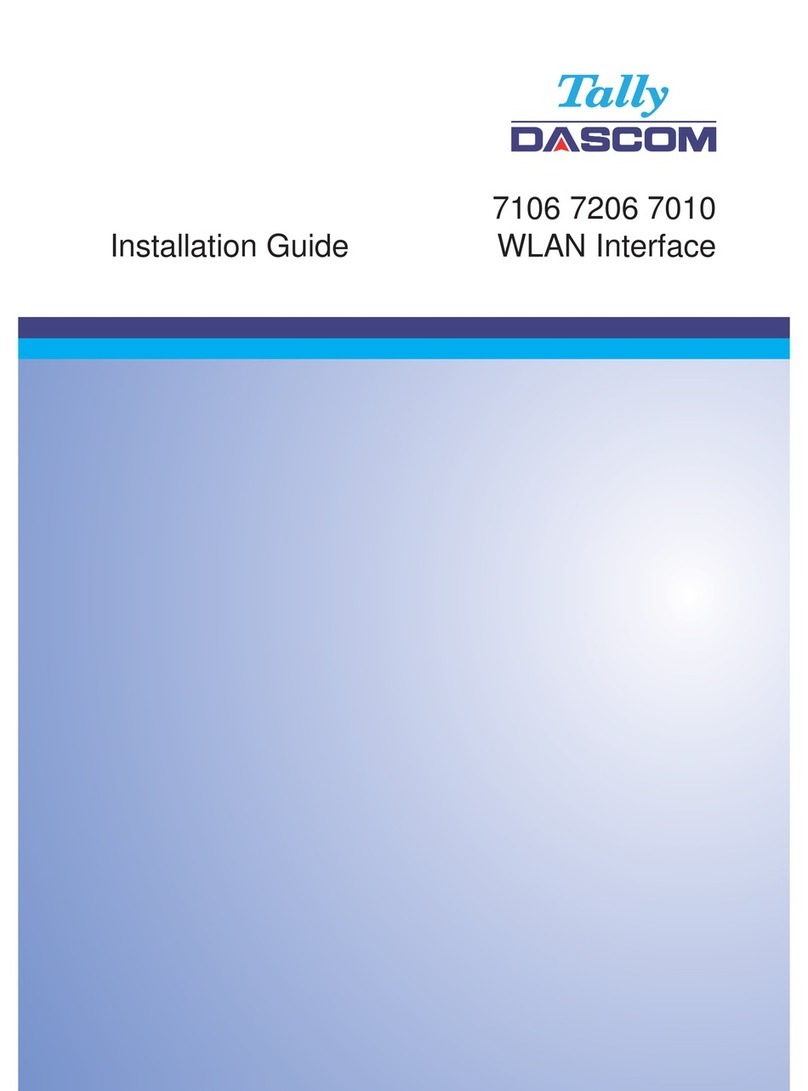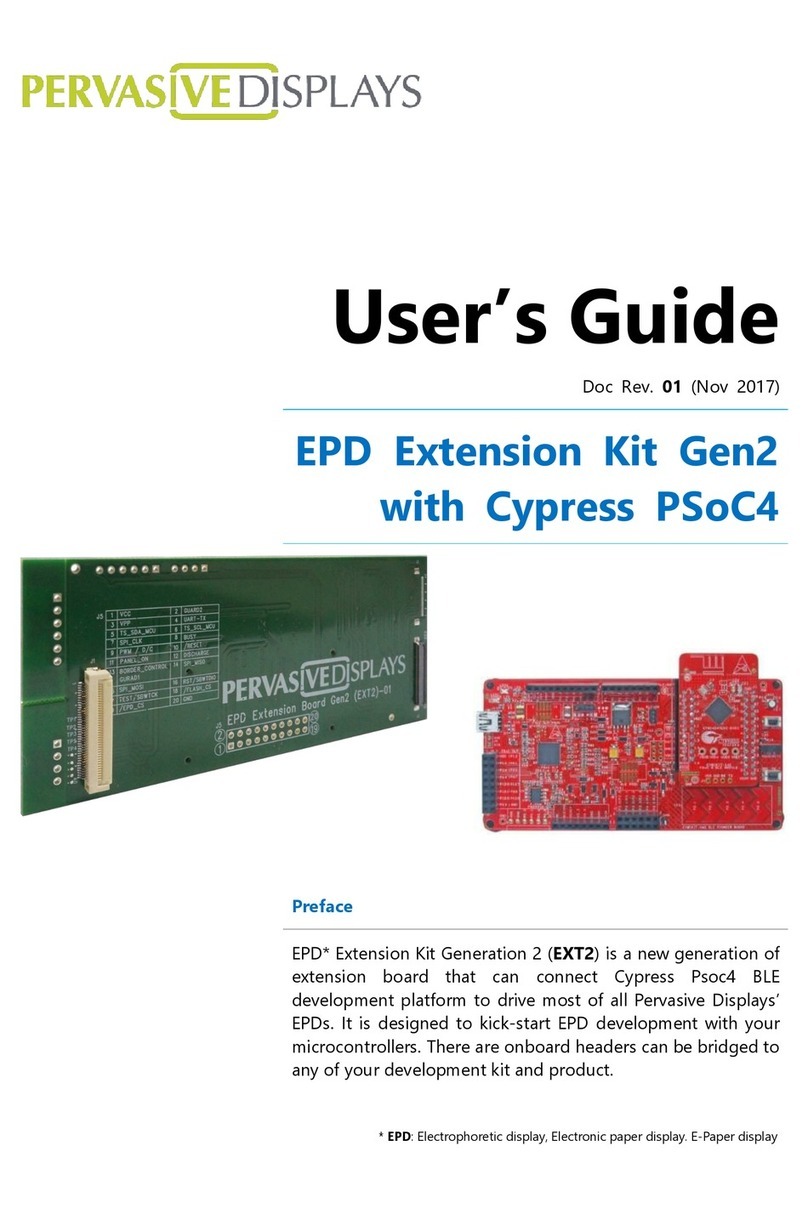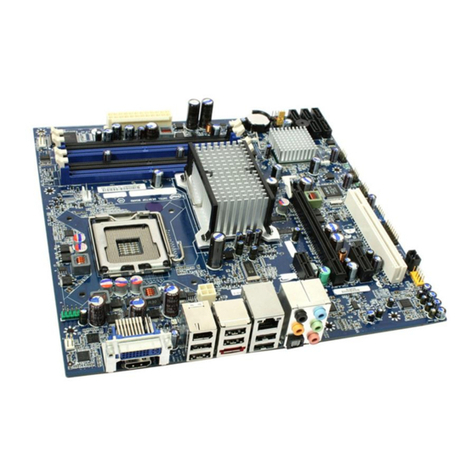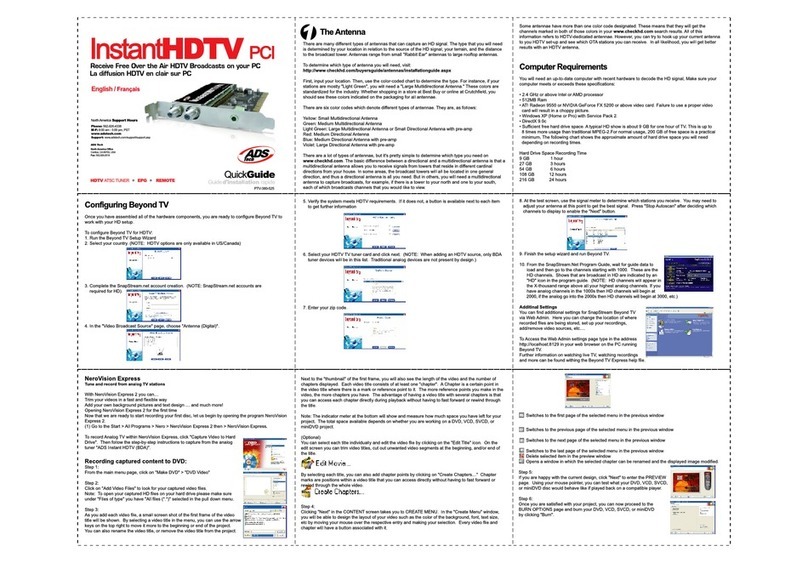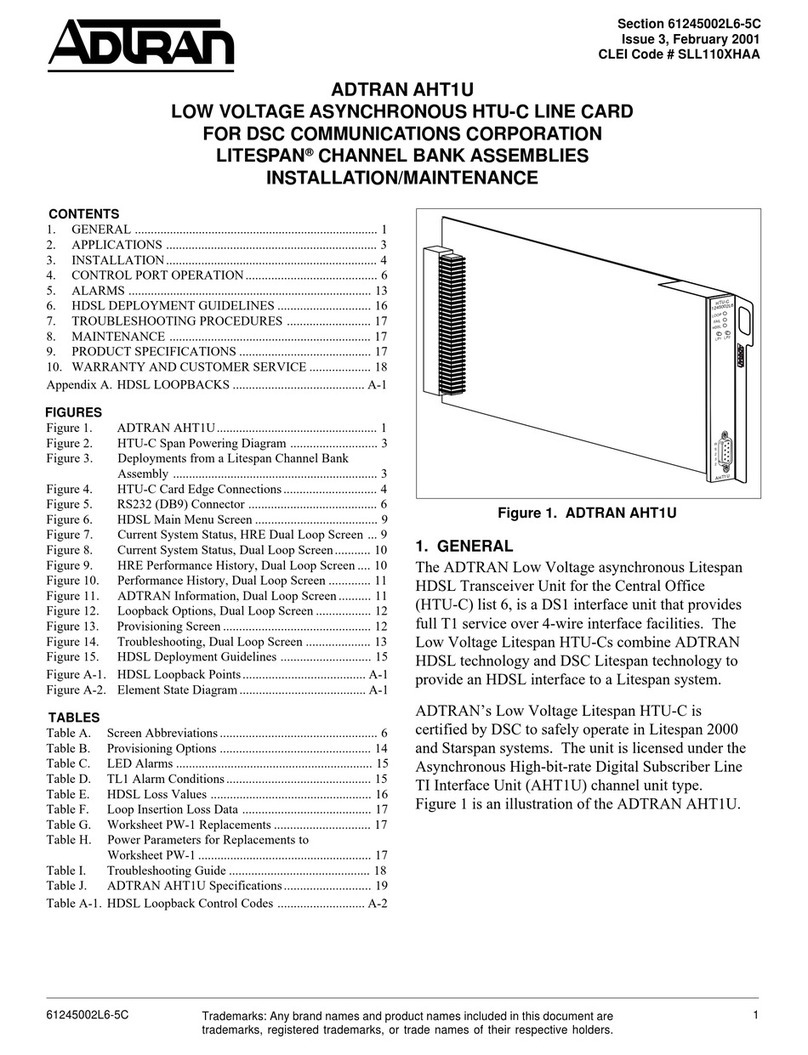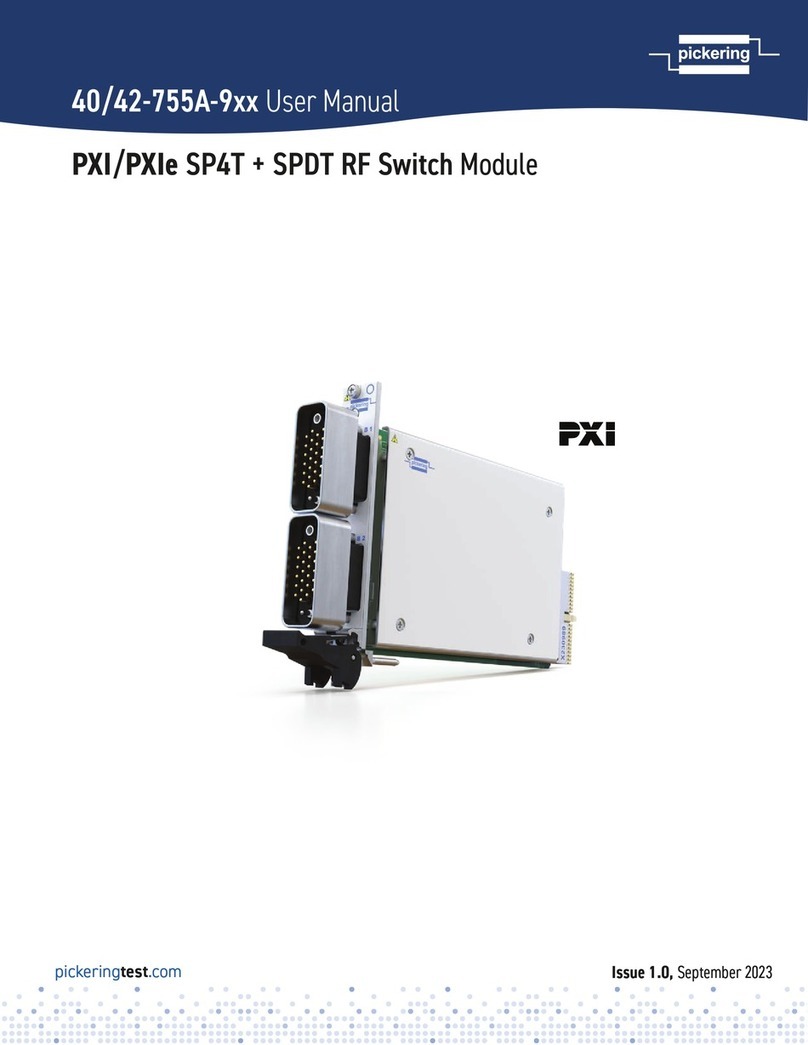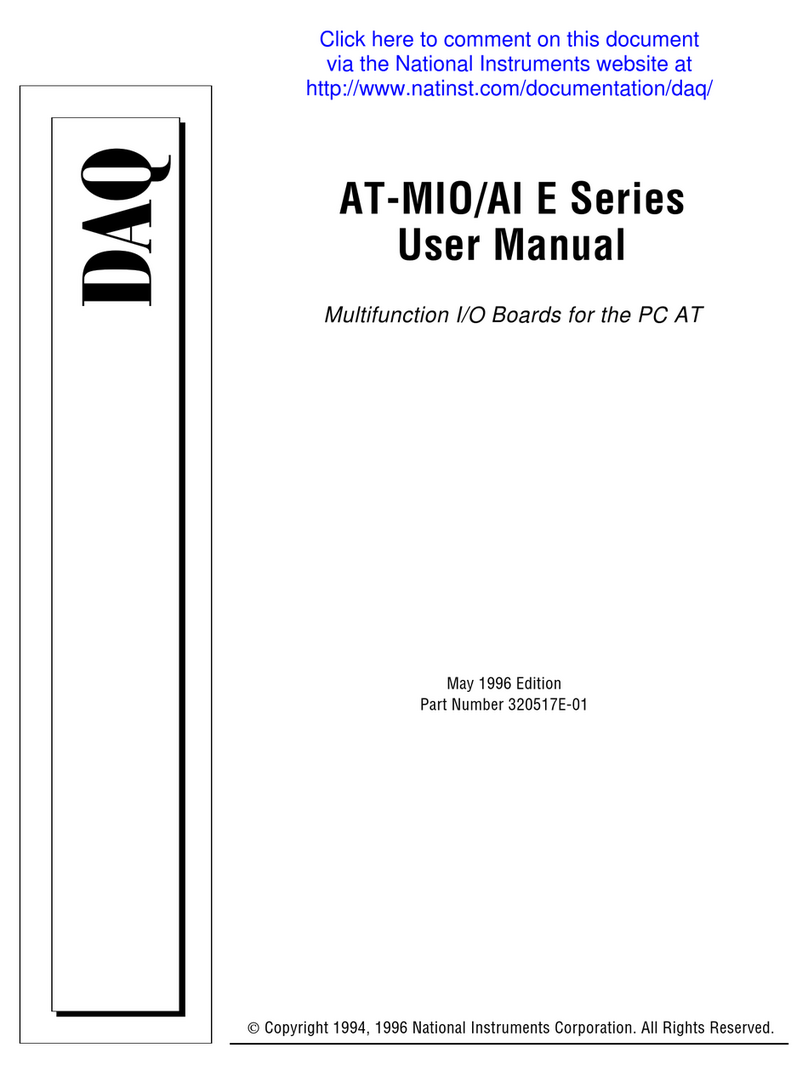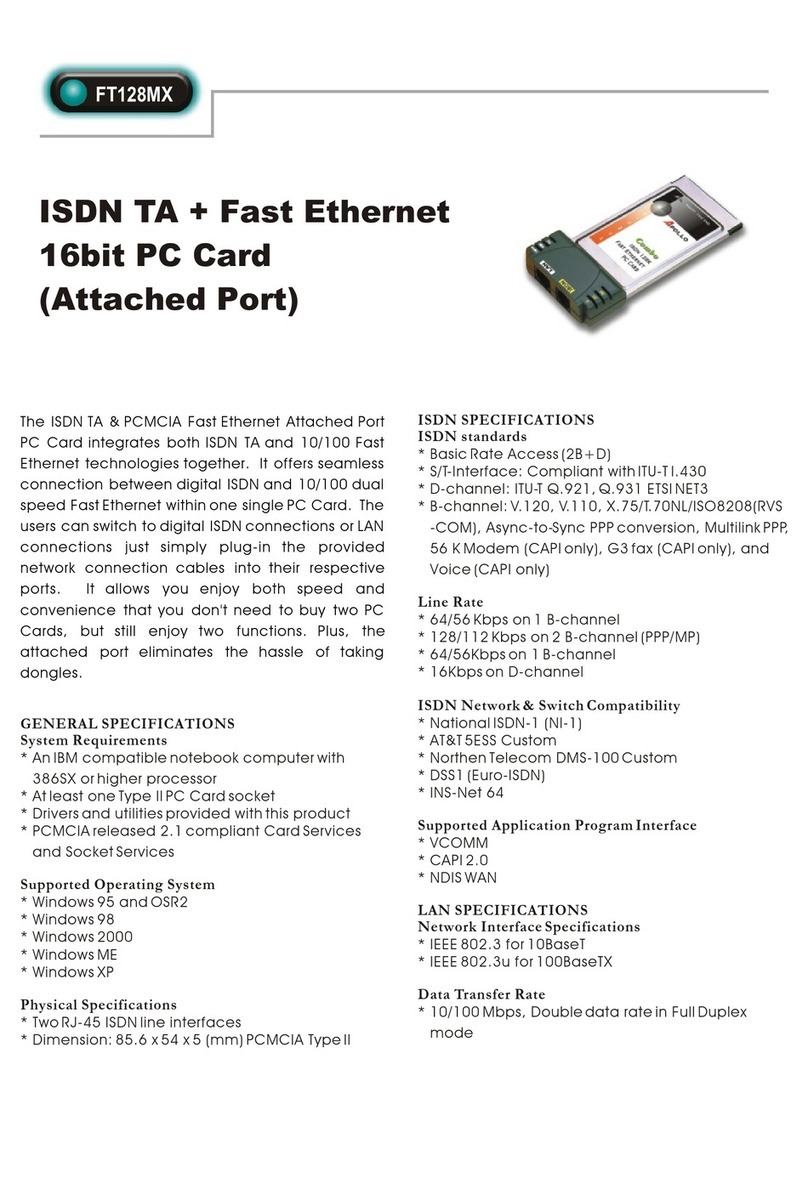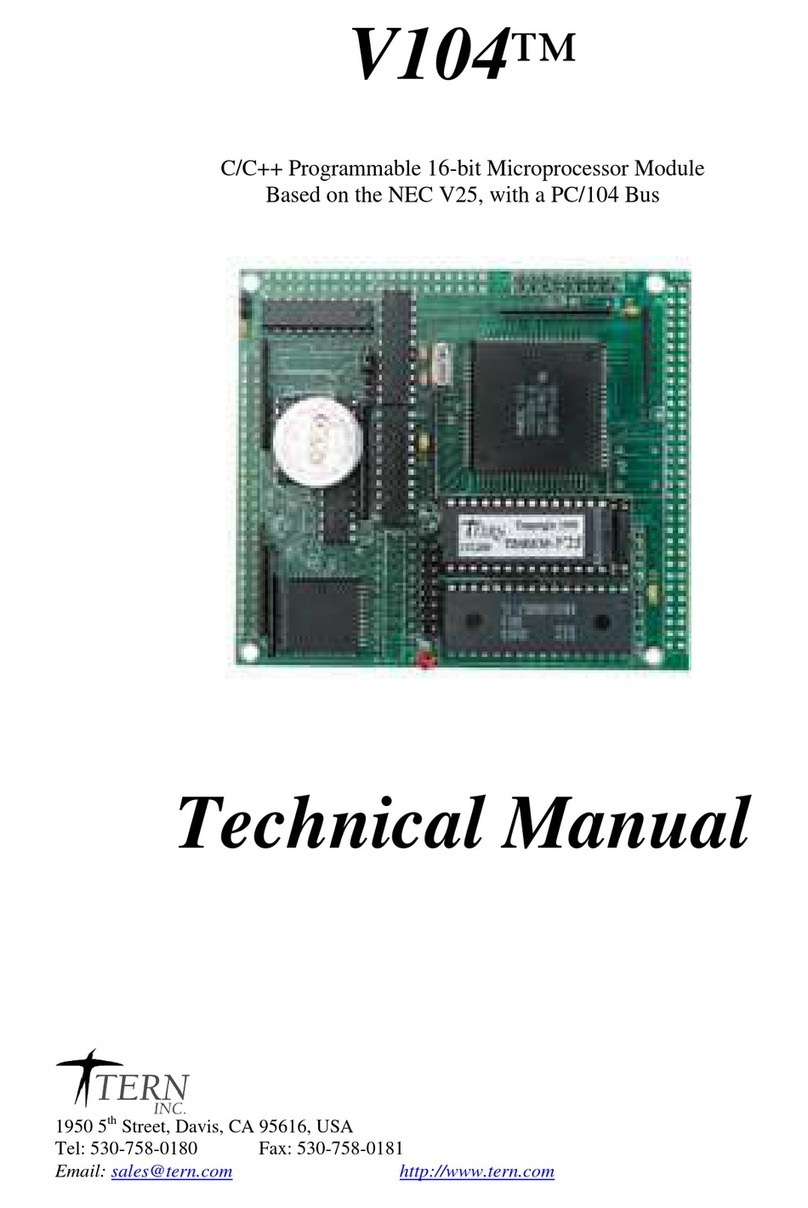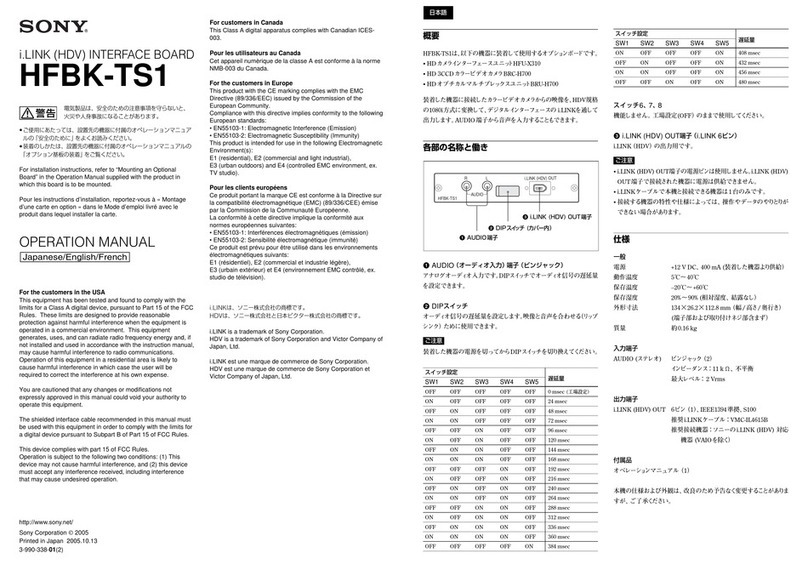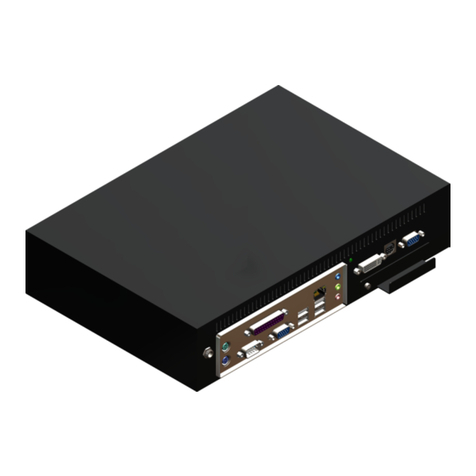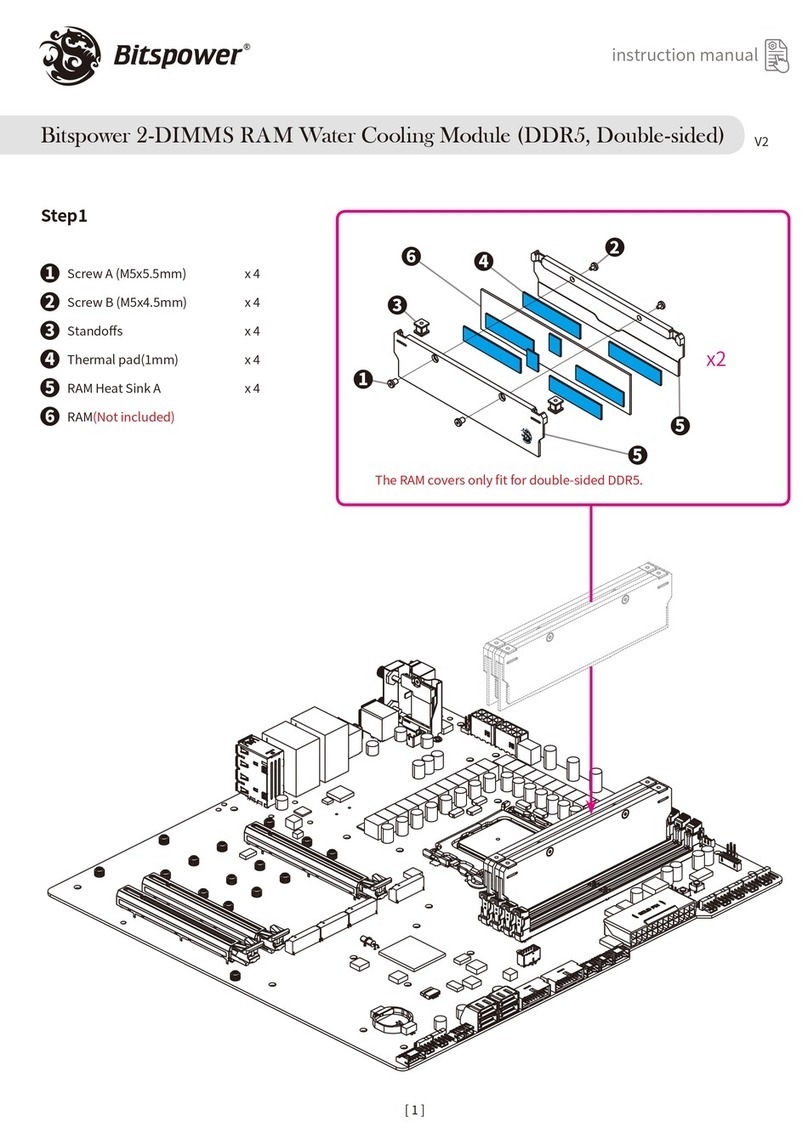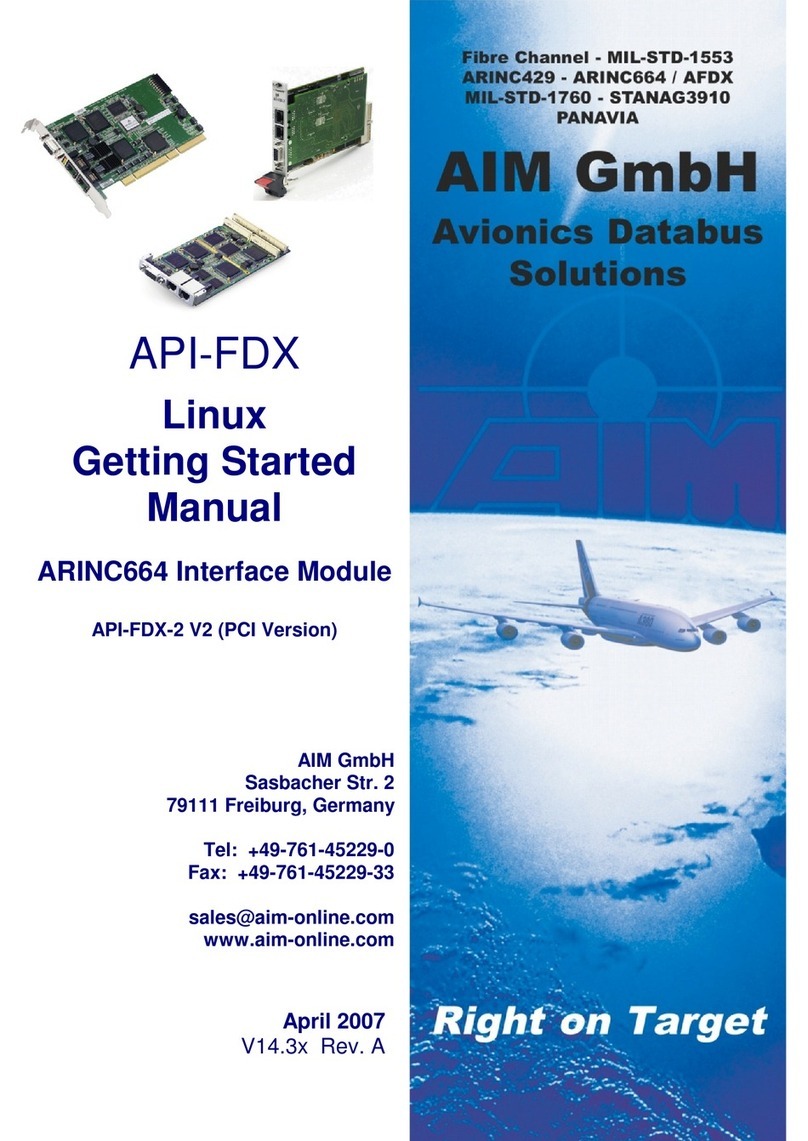
Chapter 3: Hardware P52
3-4
You can read the ports with:
inportb(PPI+0); /* Port 0 */
inportb(PPI+2); /* Port 1 */
inportb(PPI+4); /* Port 2 */
These inport(PPI+i); statements return an 8-bit value for each port, with each bit corresponding to the
appropriate line on the port.
There are 24 TTL level I/O pins free to use for your application. These I/O lines are specified as 4 mA
driving current capability. PPI outputs are routed to J3.1-24. See schematics for PPI connection header J3
.
3.3.3 HCTL2020
Two quadrature decoder/counter interface chips, (HCTL2020, Hewlett Packard, U6 and U8) can be
installed on the P52. The quadrature decoder is used to interface incremental motion encoders with the
microprocessor system or to improve system performance for digital closed-loop motion control systems.
The HCTL2020 includes a quadrature decoder, a 16-bit counter, and an 8-bit bus interface. It features full
4x decoding, up to 14 MHz clock operation, high noise immunity due to Schmitt-trigger inputs and digital
noise filters, quadrature decoder output signals, up/down signal, count signals, and cascade output signal.
Many types of optical incremental encoder modules, such as the HEDS-9000, HEDS-9100, and HEDS-
9200 from HP, can be directly interfaced to the HCTL2020.
Channel A and B signals buffered with Schmitt trigger inputs (U7, 74HC14, CHA1/2, CHB1/2) are routed
at pins 31, 32, 35, and 36 on header J3. The HCTL2020 has built-in filters, which allow reliable operation
in noisy environments.
3.3.4 Four channel, 16-bit ADC (AD7655)
Two AD7655 ADC’s may be installed on the P52. The unique 16-bit parallel ADC (AD7655, 0-5V)
supports ultra high-speed (1 MHz conversion rate) analog signal acquisition. The AD7655 contains two
low noise, high bandwidth track-and-hold amplifiers that allow simultaneous sampling on two channels.
Each track-and hold amplifier has a multiplexer in front to provide a total of 4 channels analog inputs. The
parallel ADC achieves very high throughput by requiring only two CPU I/O operations (one start, one
read) to complete a 16-bit ADC reading. With a precision external 2.5V reference, the ADC accepts 0-5V
analog inputs at 16-bit resolution of 0-65,535. U22 inputs are found on J5.7-10, while U15 inputs are on
J5.11-14.
See sample program “p52_ad.c” in \tern\186\samples\p52 or \tern\586\samples\p52 for details on reading
the ADC. The sample program is also included in the pre-built sample project “p52.ide” in
\tern\186\samples\p52 and \tern\586\samples\p52.
Refer to the data sheet for additional specifications; \tern_docs\parts\ad7655.pdf.
3.3.5 Four channel, 16-bit DAC (DA8544)
The DA8544 is a parallel 16-bit D/A converter. This device supports 4 voltage output channels buffered by
ops with hardware configurable gain (default gain=2), giving default output range of ±5V. An on-board pot
allows for adjustable analog output voltage. The DAC requires an external 5V reference given by a
precision reference installed at U0.
The P52 uses data bus D15 to D0 to directly interface to the DAC’s full 16-bit data bus for maximum data
transfer rate. Four outputs are routed to J5.17-20.
A sample program “p52_da.c” is in the \tern\186\samples\p52 and \tern\586\samples\p52 directory.
















